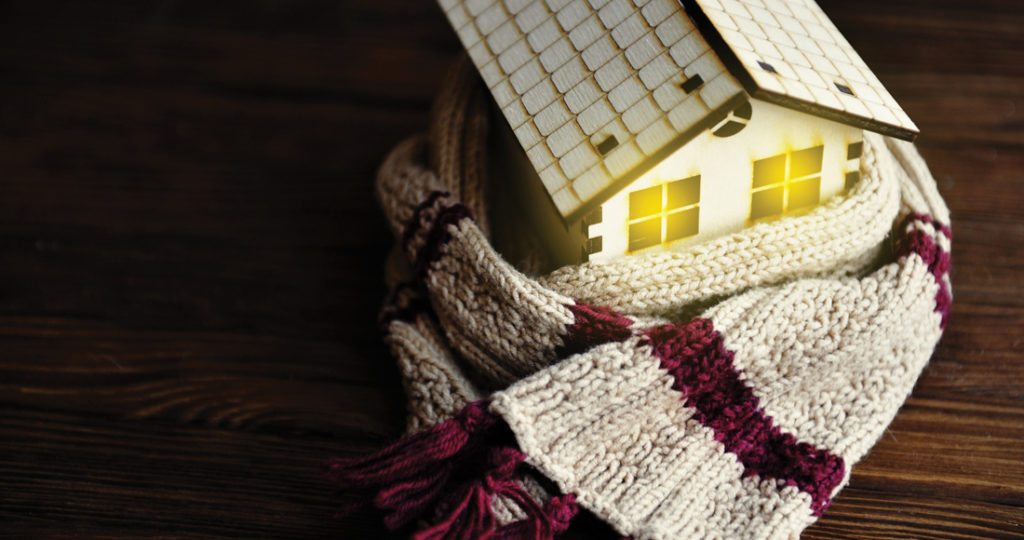A DIY guide to winterproofing your home

Prepare for the colder months with this handy DIY home guide that will not only winterproof your home, but help you cut down on electricity costs.
SEAL DOORS AND WINDOWS
The first step to keeping your home warm is to make sure that it is as weatherproof as possible. Check that your windows and doors are well insulated. If there are any gaps or defects in door or window frames, get them fixed. Your local DIY store will advise on the most affordable materials to use. Glass windows (or doors) are the biggest culprits when it comes to losing heat from a home, so they need covering. The most cost-effective window coverings are thick curtains in heavy woollen fabric, polyester or nylon, preferably with a lining. Draw them closed at sunset to keep in any warmth from the sun and prevent heat generated by a fire or heater from escaping.
COMPLETE BASIC MAINTENANCE AND REPAIRS
Fix any cracks or holes where rainwater could enter your home. Also, check your roof and make sure all the roofing material is secure and held tightly in place. While you’re up there, check and clean the gutters, too. It’s important to get rid of any build-up of leaves or debris that could cause blockages and flooding. Also, inspect and make sure that any drains around your home are clear so water can flow freely.
CHANGE THE LIGHT BULBS
Yes! Simply swapping out your current bulbs for halogen bulbs (available at most supermarkets and DIY stores) can mean more light and lower electricity bills. Halogen bulbs produce more lumens (the measure for light) per watt (the measure for electricity). The halogen gas in the bulb brings it to a higher temperature, which allows it to burn brighter than in other types of bulb, so you get extra light and warmth.
HEATING
One of the biggest considerations when it comes to winterproofing a home is how it will be heated on cold days. The two most popular options are fireplaces and heaters. If you are lucky enough to have a fireplace, the first rule is to always use dry wood, so stock up on wood if you can and store it somewhere dry. Also, keep egg boxes to use as fire-starters.
HEATER PROS AND CONS
There are many different heaters available, but certain types are more efficient than others. Here are some basic guidelines:
Avoid bar heaters that glow red when they’re on as they use a lot of electricity and can cause a nasty burn (or start a fire) if something goes wrong.
Look for a fan or oil heater as they are much safer and use less electricity. If your heater has a thermostat, use it on a medium setting to conserve energy.
Bottled-gas heaters and paraffin stoves are also good options, but they produce water vapour which can cause mould and damp problems, so the room must be well ventilated.
5 TOP TIPS FOR STAYING WARM AND SAVE ELECTRICITY
Use a hot water bottle to heat your bed at night.
Cover your geyser with a geyser blanket that will insulate it and keep the water warmer for longer. You can get one for around 300.00, and it will soon pay for itself in electricity saved. Leave the oven door open after cooking so that the warm air can heat up the room.
If your floors are really cold, put layers of newspaper underneath any rugs or mats.
Roll up mats, newspaper or towels to block drafts coming in underneath doors.
ASK AN EXPERT
JET CLUB MEMBERS HAVE FREE ACCESS TO JET CLUB’S HELPLINES.
FIX-MY-HOME (EMERGENCY HOME ASSISTANCE)
SA & Namibia
0800 0045 45
Botswana, Lesotho & Swaziland
+2711 991 8258
Related articles

Latest Jet club magazine
We’ve got the latest trends, exciting prizes and exclusive savings just for you!
Jet Club will not pass your details to anyone else. By clicking the subscribe button you confirm you have read and agree to the Jet Club Terms and conditions and Jet Club Privacy Statement.
Subscribe

